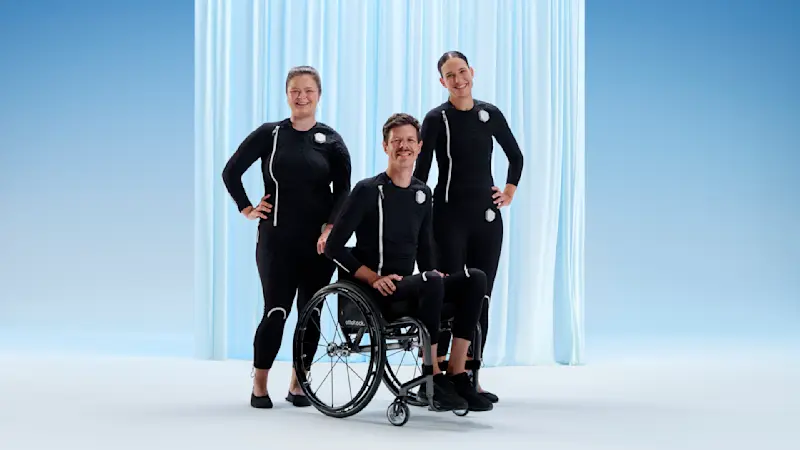Advancing NeuroMobility: Latest Clinical Insights for Exopulse Mollii Suit and C-Brace
Online-Symposium highlights advancements in Multiple Sclerosis and Spinal Cord Injuries

Tuesday, 17 June 2025
On Tuesday, 3rd June 2025, an event was held about “Advancing NeuroMobility: Latest Clinical Insights for exopulse suit and C-Brace”. Experts shared recent results about the neuromodulation suit in Multiple sclerosis (MS) including the promising impact in balance, spasticity and walking as well as patient cases with Exopulse Mollii Suit. Amongst others the online-symposium showcased clinical findings of the microprocessor-controlled leg orthosis C-Brace including the positive impact on people with spinal cord injury (SCI).
During the event moderator Dr Andreas Hahn (Corporate Vice President Clinical Research and Services, Otto Bock Healthcare Products GmbH – Vienna, Austria) reinforced the need for continued research to refine treatments and fully explore long-term benefits for various indications.
Prof Samar Ayache shares first systematic collected treatment results of MS patients with Exopulse Mollii Suit
Motor symptoms such as balance impairment, spasticity, weakness, and fatigue are common and debilitating in patients with MS (PwMS), often leading to reduced quality of life. Existing treatments are limited by suboptimal efficacy or adverse effects. The Exopulse Mollii Suit, which targets via transcutaneous electrical nerve stimulation (TENS) 40 muscle groups simultaneously and may represent a novel therapeutic option.
Prof. Samar Ayache (Associate Professor of Clinical Neurophysiology, Faculty of Medicine, Paris-Est University – Creteil, France) and her team thought of assessing the impact of the Exopulse Mollii Suit on balance, motor symptoms, and quality of life in PwMS in France.
Prof Ayache presented the study design and explained that the trail included two phases:
A randomized double-blind, crossover trail comparing the effects of a single 60-minute session of active versus sham stimulation.
This was followed by an open-label, four-week intervention designed to assess sustained outcomes. The primary endpoint was balance (Berg-Balance-Scale), with secondary outcomes including spasticity, mobility, pain, fatigue, and quality of life.
32 participants completed Phase 1. It showed significant improvements in balance (p<0.001), spasticity (p<0.001), and fatigue (p=0.007). Phase 2 completed 30 participants, who tolerated the intervention well. The continued stimulation led to sustained improvements in balance, spasticity, mobility, and quality of life (all p<0.05).
Prof. Ayache resumed that these findings demonstrate significant improvements in motor symptoms among PwMS and can support the Exopulse Mollii Suit as a promising adjunctive therapy. But further large-scale, long-term studies are needed to validate clinical effectiveness and sustained benefits.
The results represent the first systematically collected results on MS and have been accepted for publication. They will soon be available as open access.
Successful patient experiences with Exopulse Mollii Suit
Alberto Nicolini, product specialist from OttoBock Italia, who has been working with Exopulse Mollii Suit since 2013, brought his longtime experience with patients to the discussion.
“Studies help us understand what outcomes and measurements can be used to support patients and caregivers in understanding whether the Exopulse Mollii Suit is the right tool to add to their lives,” he explained. “On the other hand, our daily clinical experience is opening up new areas of application to discover.”
To highlight this point, Nicolini showed results and testimonies from some Italian patients, such as Chistina Raineri, a user from Italy who was diagnosed in 2021 with facioscapulohumeral muscle dystrophy (FHSD). The 51 years old was rapidly loosing balance and endurance in walking. “Since using the suit in 2023, I stopped falling forward on the sink while washing my face,” Christina stated. “I do not need a cane anymore and I can stand in line at the supermarket without losing balance and taking steps backwards.”
The music teacher and opera singer Martina Debbia suffers from spastic dyplegia since birth. The neuromodulation suit improved her walking, endourance, and her balance. “But also the control of my voice is better: I can stand for longer time and breath better, therefore I feel my singing voice is stronger and more powerful during concerts,” explained the 35 years old.
C-Brace as an early application in rehabilitation with SCI
Prof. Arun Jayaraman (Director Max Näder Center for Rehabilitation Technologies & Outcomes Research) presented preliminary data and promising case studies demonstrating the potential of C-Brace. Provided to people with SCI at an earlier stage of recovery it can work both as an orthotic and as a therapeutic tool he explained. By encouraging early walking using biomechanical normal loading and walking patterns the orthosis enhances neural recovery.
“It is the perfect time where technology and traditional care models work together for better outcome for the patients,” he concluded.
To view the recording of the symposium, please register by clicking on this link: Advancing NeuroMobility: Latest Clinical Insights for exopulse suit and C-Brace. After sucessful registration, the link to the recording will be sent in the confirmation e-mail. The recording is available until 20th September 2025.

